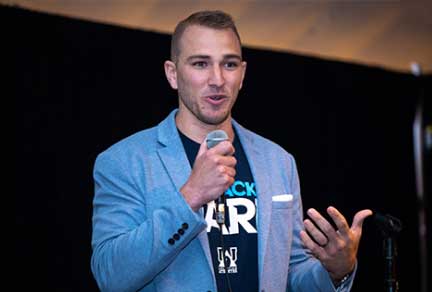New FDA biosimilars guidance: CES waiver pathway aligns with global regulatory approaches
This blog is part of The Regulatory Navigator series, where we explore the evolving regulatory landscape with actionable insight from Parexel's experts, sharing their experience to maximize success for clinical development and patient access.
Changing landscape of biosimilar regulatory assessment
As biosimilars become increasingly pivotal to expanding access to biologic therapies, regulators are reevaluating the necessity of comparative efficacy study (CES) performance as part of biologics license applications (BLA) in the US1 and/or marketing authorization applications (MAA) in Europe:
- In April 2023, the UK's MHRA became the first regulatory body to formally challenge routine CES requirements, and has recently updated its guidance on biosimilar licensing2
- The European Medicines Agency (EMA) followed with a reflection paper released for consultation in April 20253
- Most recently, the FDA has aligned with this approach, releasing draft guidance in October 2025 that supports the message already being communicated in sponsor meetings1
This regulatory shift represents a significant evolution from the FDA's initial 2015 guidance, which recommended CES when uncertainty existed about clinically meaningful differences between biosimilars and reference products.4 While waivers were theoretically possible with proper scientific justification, they were rarely used in practice and CESs were still conducted and expected as part of the BLA submission.
Confidence in waiving the CES has grown over two decades of biosimilar development, as these studies have consistently failed to yield clinically differentiating insights. Analysis of 39 CES reviews demonstrated that none provided critical evidence for establishing biosimilarity.5
Regulators increasingly recognize that modern analytical technologies applied in Comparative Analytical Assessment (CAA) coupled with pharmacokinetic studies are highly sensitive tools to confirm biosimilarity, rendering CES as no longer essential.
FDA endorses analytical technologies as valid scientific basis for CES waivers
FDA has developed deep expertise in evaluating analytical differences between biosimilars and reference products, and in interpreting their potential clinical relevance. The recent guidance underscores that modern analytical technologies, particularly in vitro biological and biochemical assays, offer exceptional sensitivity and specificity. Many in vitro assays correlate with mechanisms of action of the product. Therefore, CAA is generally more sensitive than CESs in detecting product differences.
If CAA demonstrates high similarity, a well-designed human pharmacokinetic (PK) study and immunogenicity assessment may suffice to confirm biosimilarity. There are several circumstances that would allow CES waivers, as listed in Table 1 below.
| FDA requirements | EMA requirements | |
| Understanding of mechanism of action (MoA) | Quality attributes linked to efficacy are understood | Biologic has a known or well-understood MoA and structure-function relationship |
| Quality | Quality attributes linked to efficacy are well characterized and measurable | Validated functional assays predictive of in vivo performance. |
| Biosimilar, and reference product derived from clonal cell lines and are highly purified | Biologic is well characterizable | |
| Similarity assessment protocol pre-agreed with EMA (via scientific advice meeting) using robust orthogonal methods | ||
| Well-controlled manufacturing process ensuring batch-to-batch consistency | ||
| PK studies | PK similarity study mandatory; must be feasible | PK similarity study mandatory |
| Immunogenicity | Immunogenicity is a key safety endpoint; and together with PK can replace CES for most products. Dedicated immunogenicity assays (anti-drug antibodies, neutralizing antibodies) expected even if CES waived, and FDA may require additional non-efficacy clinical endpoints or safety monitoring if immunogenicity risk remains unclear | Immunogenicity risk can be inferred from structural/functional similarity and PK comparability; CES adds little incremental value. If immunogenicity cannot be inferred from PK and analytical data, EMA may request targeted clinical safety data |
Table 1. Comparison of FDA and EMA requirements to support CES waiver for biosimilars
In some circumstances, a CES may still be required – such as for locally acting products (like intravitreal therapies) where PK studies are not feasible or clinically relevant; or when endpoints other than efficacy are considered of clinical importance. In such cases, sponsors are encouraged to engage with the FDA early in development to align on the study design.
EMA introduces more scientific rigor and immunogenicity safeguards with CES waivers
EMA’s position is not dissimilar to the recent FDA guidance but differs in tone, taking a more cautious approach to tailoring biosimilar programs and emphasizing the need for scientific rigor.4 In its recent reflection paper, the EMA states that waivers are possible but must be supported by interdisciplinary risk assessments and developers must justify any differences in quality attributes using orthogonal analytical methods. More details on the EMA requirements to consider a CES waiver are listed in Table 1 above.
Additionally, similar to FDA requirements, addressing comparative immunogenicity was emphasized at an EMA workshop, and clinical evaluation of immunogenicity was flagged as an important topic.6 A risk-based analysis can be applied to justify that a single-dose study in healthy volunteers will provide adequate comparative immunogenicity assurance, but this will need to be constructed based on a detailed analysis, including evaluation of the assays applied, potential to detect anti-drug antibodies and a risk assessment based on evaluation of published data.
Optimizing PK/PD studies as the cornerstone of streamlined biosimilar development
With two decades of experience in bringing biosimilars to market, Parexel experts have published several papers advocating for CES waivers, which very much align with regulators position and can serve as useful sources of reference.7, 8, 9 Our experience shows that:
- For monoclonal antibodies (mAbs) which are often dosed on the plateau of the dose-response curve, clinical trials are inherently insensitive to identify differences
- In vitro assays—such as ELISA, SPR, and cell-based models—effectively replicate mechanisms of action with greater sensitivity than a CES
- PK/PD studies in healthy volunteers or patients, when properly designed, are generally sufficient to confirm therapeutic equivalence across indications
- Safety differences are typically driven by immunogenicity, which can be monitored without a CES
With PK/PD being the only clinical evidence supporting biosimilarity, careful consideration needs to be given to their study design and conduct:
- Generally healthy volunteer studies are preferred for their homogeneity and reduced variability, unless safety concerns necessitate that PK be studied in patients
- Population selection criteria (age, BMI, sex, ethnicity) should be optimized to minimize variability
- Variability needs to be controlled through use of sufficiently large cohorts, standardized conditions, and well-trained personnel
- Data integrity needs to be ensured through accurate sampling, robust sample handling and tracking
Next steps for sponsors to navigate CES waivers successfully
Tailoring of biosimilar programs with waiver of CES can reduce development costs, expand biosimilar pipelines, and improve patient access – provided developers successfully navigate the nuanced expectations of each regulatory agency.
When CES are waived, the focus shifts to high-quality analytical and PK/PD data. Sponsors should ensure that study design, execution, and data integrity meet elevated regulatory expectations:
- When you are still early in development, evaluate your ongoing programs to determine if CES waivers are feasible and would benefit time/cost projections and engage early with regulatory agencies to align on your development strategies
- When preparing for CES waiver, strengthen analytical characterization capabilities, optimize PK/PD study designs and develop comprehensive immunogenicity risk assessment to meet elevated regulatory expectations
- When implementing improvements holistically, incorporate streamlined development approaches into pipeline planning, to maximize portfolio efficiencies
Biosimilar developers who successfully navigate these evolving requirements can gain significant competitive advantages through faster development timelines and reduced costs. Parexel's extensive experience positions us to support sponsors in designing and executing tailored biosimilar development programs that meet these new regulatory expectations while maximizing the potential for successful market entry.
For your questions about biosimilar product development and CES waiver, please contact us. We are always available for a conversation.
References
- Food and Drug Administration (FDA). (2025, October). Scientific Considerations in Demonstrating Biosimilarity to a Reference Product: Updated Recommendations for Assessing the Need for Comparative Efficacy Studies.
- Medicines and Healthcare products Regulatory Agency (MHRA). (2025, February). Guidance on the licensing of biosimilar products.
- European Medicines Agency (EMA). (2025, April). Reflection paper on a tailored clinical approach in biosimilar development (EMA/CHMP/BMWP/60916/2025).
- Food and Drug Administration (FDA). (2015, April). Scientific Considerations in Demonstrating Biosimilarity to a Reference Product.
- Bielsky, M. C., Cook, A., Wallington, A., Exley, A., Kauser, S., Hay, J. L., Both, L., & Brown, D. (2020). Streamlined approval of biosimilars: moving on from the confirmatory efficacy trial. Drug Discovery Today. https://doi.org/10.1016/j.drudis.2020.09.006
- European Medicines Agency (EMA) (2025, September). Workshop on a tailored clinical approach in biosimilar development.
- Nick, C. (2025, February). Optimizing development of anti-TNFα biosimilars based on 10 years' experience. Exploration of Musculoskeletal Diseases, 3, 100782. https://doi.org/10.37349/emd.2025.100782
- Nick, C., et al. (2025, March). Biosimilar development: Optimizing PK/PD studies [White paper]. Parexel.
- Nick, C. (2024, February). Streamlining biosimilar development based on 20 years' experience. Expert Opinion on Biological Therapy, 571-581. https://doi.org/10.1080/14712598.2024.2314612
Note: This information is provided for educational purposes only. It should not be construed as legal advice, and readers should not act upon this information without seeking professional advice.
Related Insights
Blog
EU Biotech Act: Strategic considerations for biotech companies
Dec 22, 2025
Blog
The EU-CTR transition: Four key ways to prepare now
Jan 12, 2024
Webinar
Assessing appropriate use of ECAs in clinical trials
May 28, 2023
Blog
Celebrating 40 Years of Rare Disease Progress: WODC Highlights
Jun 6, 2023
Blog
Population variability: important considerations in vaccine development
Jun 14, 2023
Whitepaper
How to prepare for Policy 0070: Challenges and opportunities for clinical data publication in the EU
Jun 28, 2023
Article
The technologies that are reshaping biotherapeutics manufacturing, an EU perspective
Jul 6, 2023
Blog
Ensuring future success in a new market by delivering a robust safety database solution
Aug 4, 2023
Whitepaper
Optimizing the Route to Regulatory Approval for a Novel Vaccine
Aug 18, 2023
Article
Australia: The Regulatory and Reimbursement Environment
Aug 28, 2023
Whitepaper
Scientific Validity Reports: a mandatory requirement for In Vitro Diagnostic Regulation (IVDR)
Sep 19, 2023
Blog
Assessing the need for comparative clinical trials in biosimilar development programs
Sep 21, 2023
Related Insights
Blog
EU Biotech Act: Strategic considerations for biotech companies
Dec 22, 2025
Blog
The EU-CTR transition: Four key ways to prepare now
Jan 12, 2024
Webinar
Assessing appropriate use of ECAs in clinical trials
May 28, 2023
Blog
Celebrating 40 Years of Rare Disease Progress: WODC Highlights
Jun 6, 2023
Blog
Population variability: important considerations in vaccine development
Jun 14, 2023
Whitepaper
How to prepare for Policy 0070: Challenges and opportunities for clinical data publication in the EU
Jun 28, 2023
Article
The technologies that are reshaping biotherapeutics manufacturing, an EU perspective
Jul 6, 2023
Blog
Ensuring future success in a new market by delivering a robust safety database solution
Aug 4, 2023
Whitepaper
Optimizing the Route to Regulatory Approval for a Novel Vaccine
Aug 18, 2023
Article
Australia: The Regulatory and Reimbursement Environment
Aug 28, 2023
Whitepaper
Scientific Validity Reports: a mandatory requirement for In Vitro Diagnostic Regulation (IVDR)
Sep 19, 2023
Blog
Assessing the need for comparative clinical trials in biosimilar development programs
Sep 21, 2023



